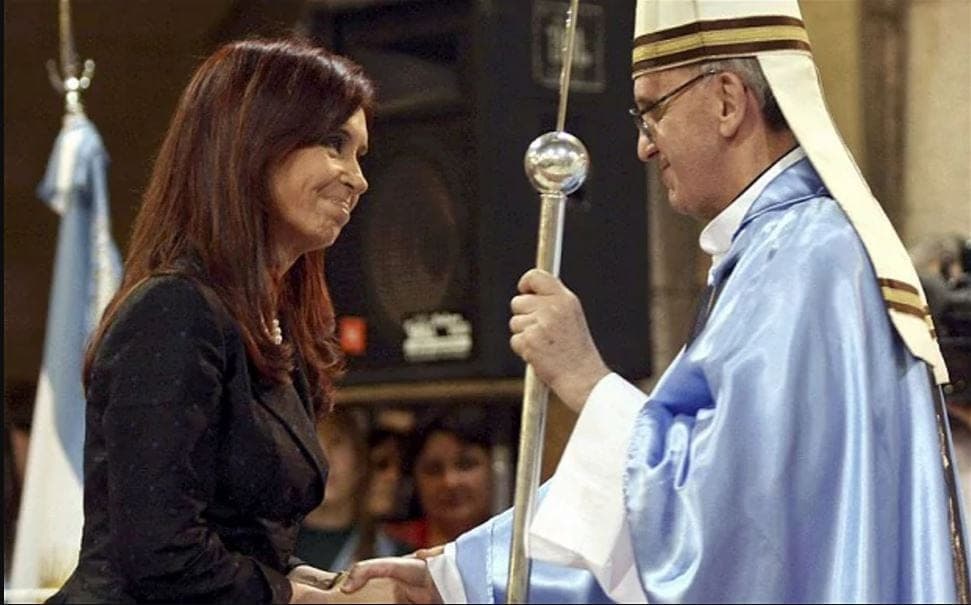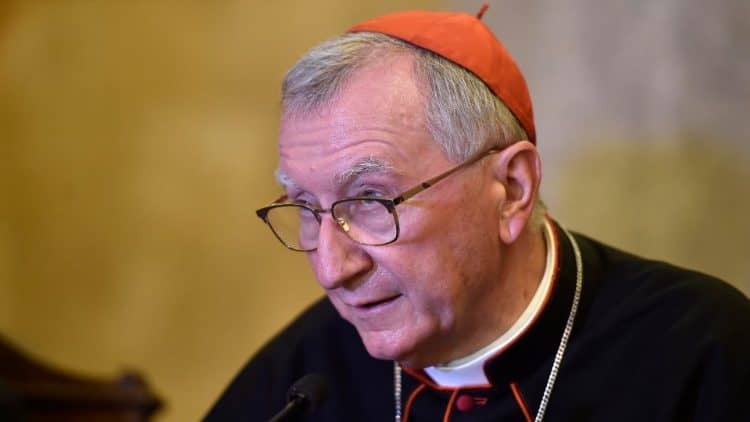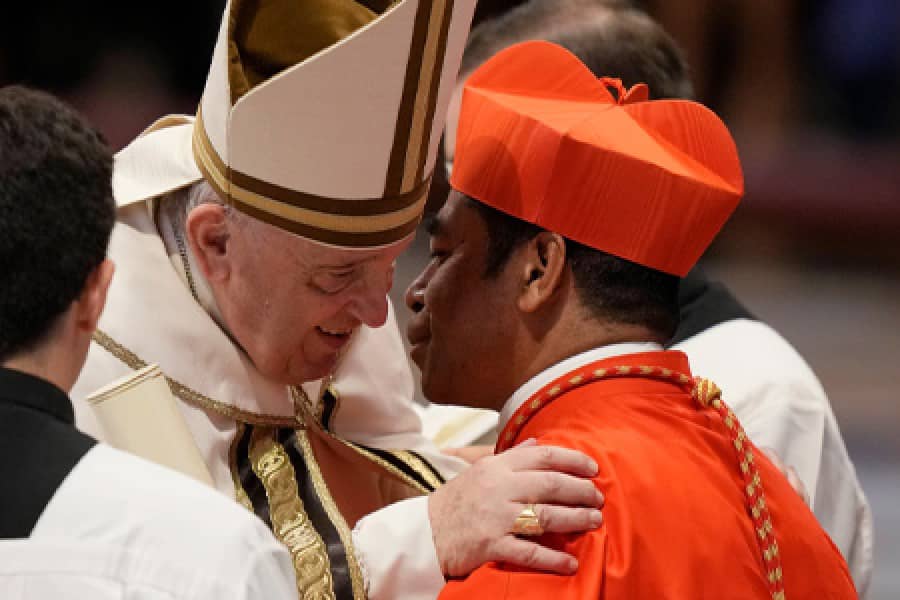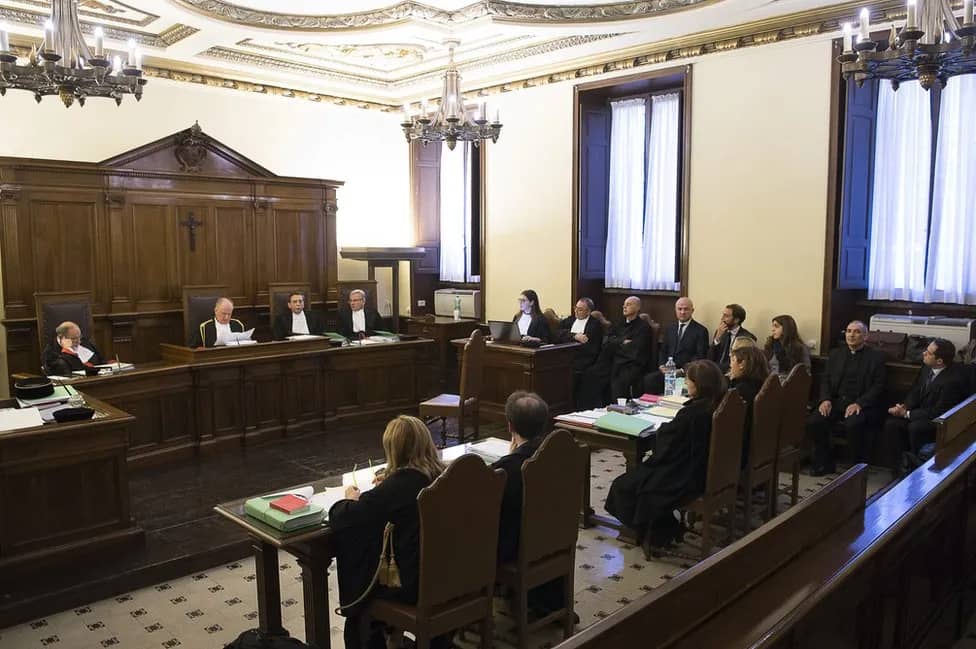ROME— When Pope Francis and German Chancellor Angela Merkel meet on Saturday, it’ll be the fourth time the two see each other in Rome. For a leader who’s often recommended putting more women in leadership positions inside his own house, the meeting cements the fact that when it comes to dealing with powerful women, it’s par for the course for this pontiff.
As is the case between the Vatican and most governments around the world, Francis and Merkel sometimes disagree on matters of policy, but when it comes to personality, he has a life-long experience of seeing women in charge.
In Argentina
A female head of state is nothing new in Francis’s home country of Argentina, which had two of them in the last five decades, both of whom went from First Lady to President.
In 1974, after the death of her husband, Juan Domingo Perón, Maria Estella Martínez, also known as Isabelita Perón, became the world’s first woman president.
During her husband’s third term, which began in 1973, the former cabaret dancer was much more than the president’s third wife: the two shared the ballot in the election, with her as vice-president. For this reason, when he died in office in 1974, she took over as president, serving until March of 1976, when the commander-in-chief of the army, Jorge Rafael Videla with a military junta, ousted her.
Perón’s second wife, Evita, never made it to the ballot, despite the general’s intentions, and died when she was 33 during his second presidency.
The pope had no real interactions with either: he was just a kid during Evita’s time, and a young Jesuit provincial during Isabelita’s. But for better or worse, generations of Argentines, Francis included, grew up seeing their faces in the papers and the country’s policies were influenced by both.
In 2007, another Argentine first lady succeeded her husband in the presidency, but this time was voted into the job as the leading name on the ballot: Cristina Fernández de Kirchner, who took over the reins of the country from Néstor.
Fernández was reelected for a second term in 2011, for a term which concluded in 2015.
During her presidency, Francis was the Archbishop of Buenos Aires, and the two had a strained relationship at best, partially inherited from her husband’s time in office, who had labeled the then-Cardinal Jorge Mario Bergoglio as the “leader of the opposition.”
Fernández and Bergoglio clashed on many fronts, and she often saw his homilies in which he denounced growing social and economic inequalities, generalized corruption, the growth of organized crime and impunity as directed solely at her administration.
The two also had different views on “moral” issues, such as gay marriage (which was legalized during her first presidency), contraception, and sex education in schools.
Yet when he became pope, both left their differences aside. He, because he feared for Argentina’s democracy. She, mostly due to the fact that her long-time nemesis was suddenly the world’s most popular leader.
Despite the fact that Latin America is often labeled — and not without reason — as a patriarchal (machista) region, with marked differences between the sexes on issues such as equal pay and gender violence, it hasn’t stopped women from reaching positions of power.
By 2013, when Francis was elected pope, neighboring countries such as Brazil and Chile also had women presidents.
Around the world
Francis dealt with other powerful women since then, including Merkel, with whom Francis met in May 2016, February 2015 and May 2013, particularly to talk about the future of Europe and the current migrant crisis.
There’s also Christine Lagarde, the Managing Director of the International Monetary Fund, who traveled to the Vatican to see the pontiff twice, in 2014 and 2016.
Though it’s quite literally his back yard, Francis has also dealt with Rome’s first-ever female mayor, Virginia Raggi, from the upstart, anti-establishment Five Stars Movement. The two saw each other in the Vatican twice, and then again in downtown Rome last December, when Francis headed to the Piazza Mignanelli, towards the south-east extension of the recently-renovated Spanish Steps, where he blessed a crown of flowers hung on the Column of the Immaculate Conception.
Setting differences aside to find common ground
Time has shown the Argentine pontiff is willing to set differences aside to favor what he sees as the common good or in a spirit of reconciliation. He is famed for building bridges and what he calls the “culture of encounter.”
Examples abound, but just to cite recent ones, with women: In May of last year, he sat down with one of his (former) fiercest critics, founder of the Human Rights Movement Mothers of Plaza de Mayo, Hebe de Bonafini.
Last November, he had had a private meeting with Italian politician Emma Bonino, who in the 1970s was one of the leading voices in the movement that led to the legalization of abortion in the country.
The agenda during their chat? Migrants.
Nonna Rosa, and the pope’s female boss
Moving from the political to the personal, the pontiff has often spoken of two women in particular who marked his character during his formative years.
On the one hand, there is Nonna Rosa, his grandmother from his father’s side, often described by Francis as the reason why his family had to emigrate from Italy to Argentina. Before fleeing their country, she was getting progressively involved in the Italian lay movement Catholic Action.
In 2015, during one of his weekly Wednesday audiences, Francis revealed that he still keeps the letter his grandmother wrote him for his ordination in his daily prayer book. Two years earlier, during the Pentecost Vigil, he said: “I received my first Christian witness from this woman: my grandma! It’s a beautiful thing to receive this first in the home, with the family.”
A second woman, not from his childhood but from his youth, would be Esther Ballestrino de Careaga, who was the boss of a 17-year old Bergoglio in a laboratory where he worked as a chemist before entering the seminary.
Originally from Paraguay, where she was the Secretary of the Partido Revolucionario Febrerista, she was a fiery socialist orator and the founder of Paraguay’s first feminist movement in the 1940s.
She eventually was forced into exile to Argentina, where she met the future pope.
Talking to Javier Cámara y Sebastián Pfaffen, authors of the book That Francis, the pontiff acknowledged it was Ballestrino who introduced him to books from the Communist Party.
At her request, Bergoglio even hid some of them for her during the military coup that took down Isabelita. Had he been found with them, he would have been killed by the regime.
When the pope went to Paraguay in 2015, he met with Ballestrino’s two daughters, Ana María y Mabel Careaga. Talking about their meeting with the pontiff, they said they had been surprised, because Francis allegedly told them: “Your mother taught me to think.”
Ana María, only 16 during Argentina’s dirty war, was kidnapped by the military, but with Bergoglio’s help, her mother pushed for her release. The young girl went into exile, but the pope’s former boss stayed behind and was eventually kidnapped and murdered.
“He told us that many of his fights and commitments are those of my mother,” Mabel told local newspaper La Voz at the time. “The commitment with the poor, the landless, the fights against exclusion, drug trafficking and the struggle for hope (…) all this is to ‘make a havoc.’”
It remains to be seen how the relationship between the leader of the world’s strongest soft power and the “New Leader of the Free World,” as Merkel was recently dubbed, may develop.
But experience shows that when it comes to dealing with women in positions of power, he sees them as equals.
















